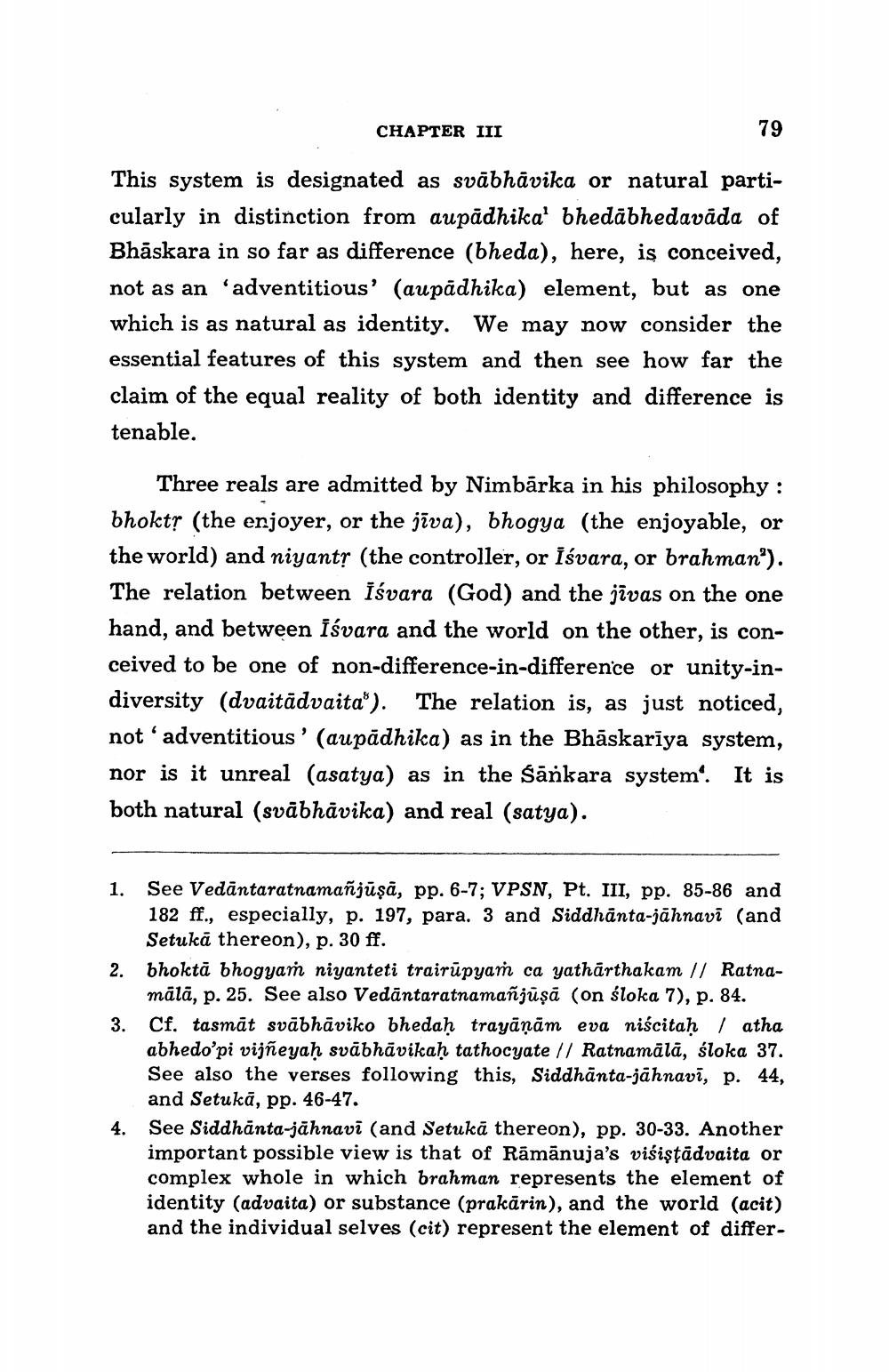________________
CHAPTER III
79
This system is designated as svābhāvika or natural particularly in distinction from aupadhika' bhedabhedavāda of Bhaskara in so far as difference (bheda), here, is conceived, not as an 'adventitious' (aupadhika) element, but as one which is as natural as identity. We may now consider the essential features of this system and then see how far the claim of the equal reality of both identity and difference is tenable.
Three reals are admitted by Nimbārka in his philosophy: bhoktṛ (the enjoyer, or the jiva), bhogya (the enjoyable, or the world) and niyantṛ (the controller, or Isvara, or brahman'). The relation between Iśvara (God) and the jivas on the one hand, and between Iśvara and the world on the other, is conceived to be one of non-difference-in-difference or unity-indiversity (dvaitadvaita"). The relation is, as just noticed, not' adventitious' (aupadhika) as in the Bhāskarīya system, nor is it unreal (asatya) as in the Sankara system'. It is both natural (svābhāvika) and real (satya).
1. See Vedāntaratnamañjūṣā, pp. 6-7; VPSN, Pt. III, pp. 85-86 and 182 ff., especially, p. 197, para. 3 and Siddhanta-jähnavi (and Setuka thereon), p. 30 ff.
3.
2. bhoktā bhogyam niyanteti trairupyam ca yatharthakam // Ratnamālā, p. 25. See also Vedāntaratnamañjūṣā (on sloka 7), p. 84.
Cf. tasmāt svābhāviko bhedaḥ trayāṇām eva niścitaḥ / atha abhedo'pi vijñeyaḥ svābhāvikaḥ tathocyate // Ratnamālā, śloka 37. See also the verses following this, Siddhanta-jähnavi, p. 44, and Setukā, pp. 46-47.
4. See Siddhanta-jāhnavi (and Setukā thereon), pp. 30-33. Another important possible view is that of Rāmānuja's visiṣṭādvaita or complex whole in which brahman represents the element of identity (advaita) or substance (prakarin), and the world (acit) and the individual selves (cit) represent the element of differ




